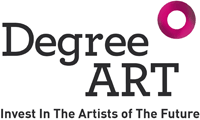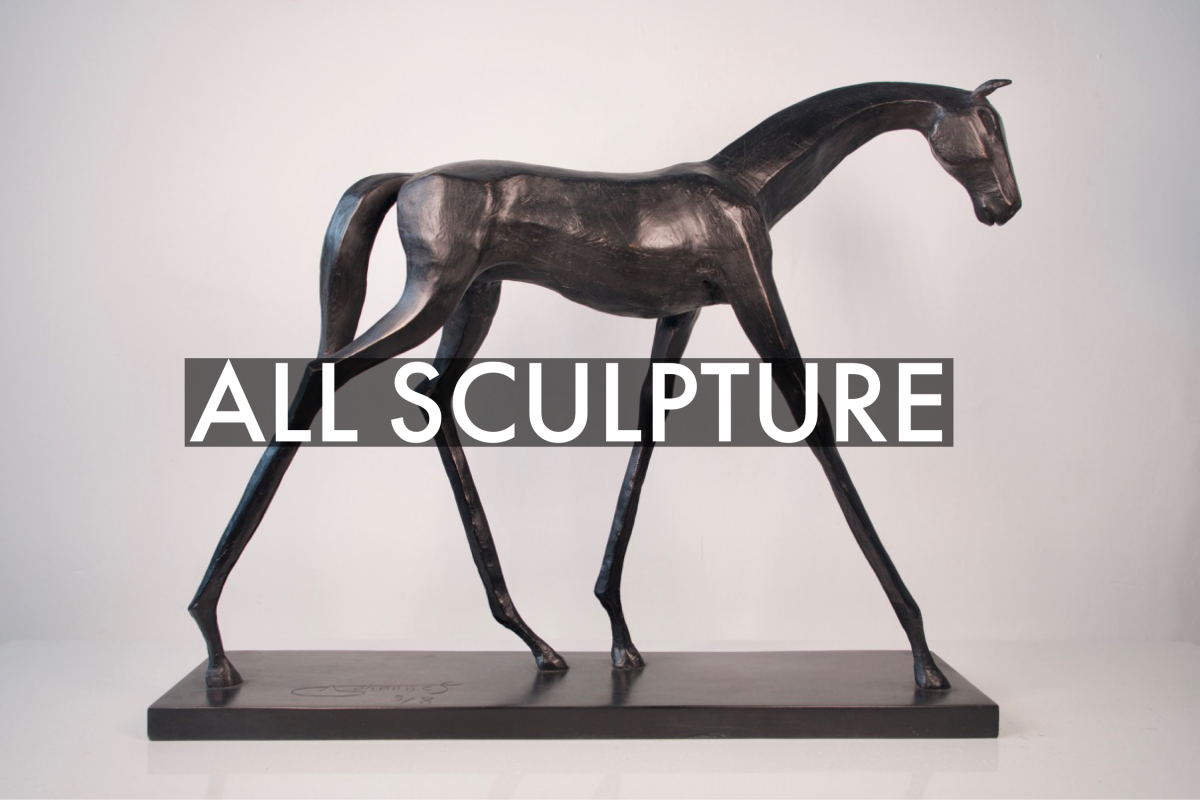Paul West is an artist who creates gestural landscape paintings and charcoal drawings. Learning skills through observing the countryside whilst walking, Paul records rugged terrains of the countryside in landscapes whilst allowing a looseness in style to portray a unique sense of energy. Pauls's work explores the interaction of paint on canvas or hardboard with the use of both vibrant colour and studied, graphic mark-making depicted in his charcoal drawings.

1) Which art movement do you consider most influential on your practice?
That's hard to answer - I've always loved Pop Art for the attitude however there's a huge volume expressionist work, elements of the gothic/romantic movement... too many movements to answer exactly, really.
2) Where do you go and when to make your best art?
Every year I go to Northumberland to walk, draw and paint. The landscape in the North East is really inspirational for my work. It's ancient, beautiful, bleak and vibrant. It's the border county between Scotland and England and the architecture and flora is quite unlike anywhere else. The Cheviots from Scotland create air streams that affect incredible cloud patterns over the North Sea and it fires my imagination.
3) How do you describe your 'creative process'?
I like to do a lot of walking when I walk I'll collect leaves, take photos of the landscape and mentally record the seasons as they change. A favourite London spot I like to take my dog is Abney Park cemetery in North London as it's a different walk every time. I read a lot about the folklore of the British Isles and the gothic sense of light and shade is very important to me and it's what I like to get across in my charcoals especially.
4) Which artist, living or deceased, is the greatest inspiration to you?
Is this one of those "only one" answers! Can I give a few please...
Andy Warhol, David Hockney, Norman Ackroyd, Käthe Kollwitz, Led Zeppelin, David Bowie will always be the top of an expanding pack of greats
5) If you weren't an artist, what would you do?
I have worked with scores of bands creating album covers, logos and directing photoshoots, so I'm happy with the paths I took. A friend of mine works at an arboretum and I would also love to work outdoor more, looking after the landscape and understanding nature more intimately.
6) What do you listen to for inspiration?
It is fair to say I've always been obsessed with music and apart from art materials it's pretty much where all my money goes - vinyl and gigs and I love to play music when I work. The music I play directly influences my brush stroke or charcoal marking. My most played bands in the Sheddio are Led Zeppelin and probably The Cure for the shade that permeates their work. Wolf Alice are always on the playlist and I'd love to work with them. Over the past year, I've been really getting into the label Erased Tapes and their artists - Nils Frahm, Ólafur Arnalds, Rival Consoles, at the moment I'm listening to David Allred 'The Cell' all the time as it's a beautiful, frail album that is very meditative to work to. Also! Sebastian Plano is an artist on rotation - his album "Verve" is superb. I saw him in a tiny gig last October and it was one of the best gigs I've seen in years.
7) If you could own one artwork, and money was no object, which piece would you acquire?
"Flight Into Italy - Swiss Landscape" by Hockney. Anything from Ivon Hitchens or Norman Ackroyd!
8) If your dream museum or collection owner came calling, which would it be?
I've always admired Pallant House Gallery in Sussex and the Scottish National Gallery

9) What is your key piece of advice for artists embarking on a fine art or creative degree today?
More than ever these days - do what you LOVE and make a difference!
10) What is your favorite book of all time (fiction or non fiction)?
'Precious Bane' by Mary Webb. I studied it in college. I liked it at the time - I find the sentiment resonates ever stronger as I get older.
11) If you could hang or place your artwork in one non traditional art setting, where would that be?
A forest clearing
12) What was the biggest lesson your university course or time studying taught you?
Go out there and grab every inspiration and opportunity to can get. No one is queuing to give you anything, you find it, and create with it. At the LCP I used all the life drawing, printing processes (Litho, screen print, etching, Lino cutting, letter press), typesetting, photography, 3D box and carton manufacturing that were available. It really is in your formative years that you hone your skills and these are the years to do it. And keep sketch books! Fill sketch books. Record your life through pencils pens and paint brushes, So much better than digital recording. I can remember everything about my life when I open an old sketch book, decades on.
13) And finally, if we were to fast forward 10 years, where would we find you?
I could list five galleries that will be selling my work but it's not wise to pre empt that in words right now. I will be travelling to remote spots of the UK to work - the outer Hebrides to Cornwall. I hope I will be immersed in the landscape exploring all manner of the art process including pottery and wood working.







